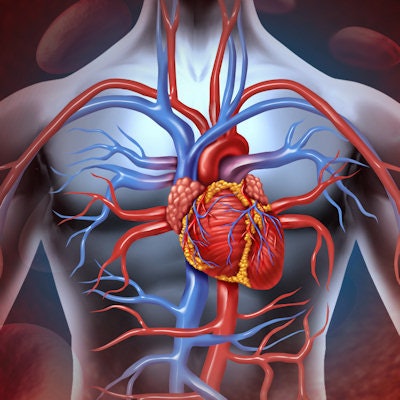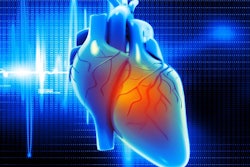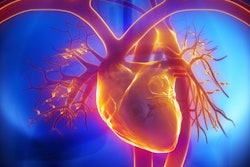
Researchers from Japan have developed a method that uses machine learning to characterize plaques on coronary CT angiography (CCTA) scans with an accuracy exceeding that of standard techniques, according to an article published online October 20 in the Journal of Cardiovascular Computed Tomography.
Integrating machine-learning algorithms into image analysis software could help identify potentially unstable plaques and, in turn, predict future cardiac events, the researchers noted.
"Although CCTA is a promising tool for the characterization of atherosclerotic coronary lesions, we suggest that for the assessment of such plaques, machine learning is superior to the conventional method," wrote first author Takanori Masuda, PhD, from Tsuchiya General Hospital in Hiroshima, and colleagues.
Increasingly more research has indicated that CCTA may not only be the best first-line exam for evaluating possible coronary artery disease (CAD) but also capable of predicting mortality from heart disease.
In the case of acute coronary syndrome (ACS) -- a form of CAD often caused by the rupture of an atherosclerotic plaque -- clinicians have found that the presence of low-attenuation plaques on CCTA scans is a strong predictor of cardiac events, the authors noted. However, the characterization of such plaques on CCTA has proved highly variable and generally not reliable enough for clinical use.
To improve upon the noninvasive evaluation of coronary plaques on CCTA, Masuda and colleagues analyzed a set of metrics drawn from the CCTA scans of 78 patients who presented with moderate stenosis at their institution. They collected these metrics, one of which included CT attenuation, using standard mathematical analysis alone and then using standard analysis in conjunction with machine learning.
The group's machine-learning algorithm relied on gradient boosting (XGBoost) to be able to determine attenuation levels on the CCTA scans and to differentiate between fatty (low attenuation) and fibrous (high attenuation) plaques. The algorithm calculated a median attenuation number of 56 HU for the fibrous plaques and 1 HU for the fatty plaques.
Using 36 HU as the optimal threshold between fatty and fibrous plaques, the researchers found that plaques with an attenuation number lower than the threshold were associated with a greater risk of ACS than plaques with an attenuation higher than the threshold.
Overall, receiver operating characteristic analysis indicated that the diagnostic performance of machine-learning CCTA for characterizing coronary plaques was superior to that of conventional CCTA analysis by a statistically significant degree (p = 0.001).
| CCTA vs. machine-learning CCTA for characterizing heart plaques | ||
| CCTA | Machine-learning CCTA | |
| Area under the curve | 0.83 | 0.92 |
While integrating machine-learning algorithms into image analysis software could help to identify unstable plaques and predict cardiac events, clinicians would need to conduct several additional studies on a larger scale to confirm these clinical implications, according to the researchers.



















